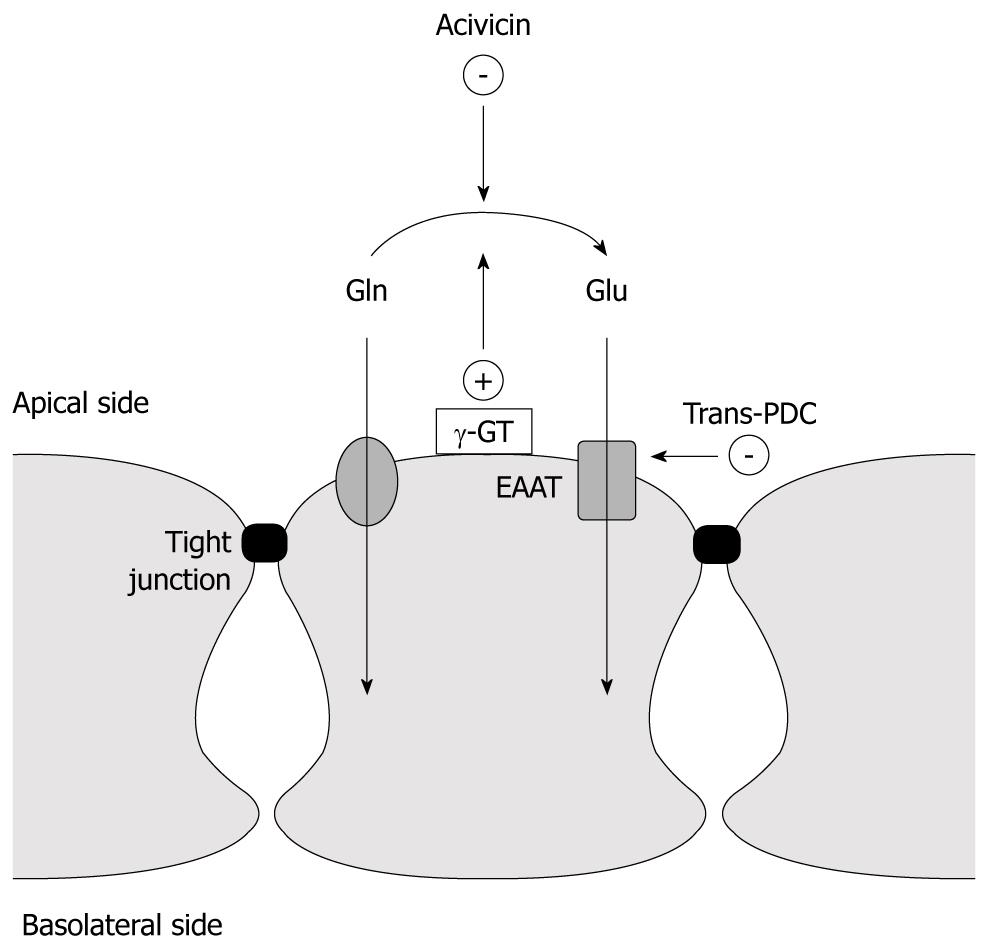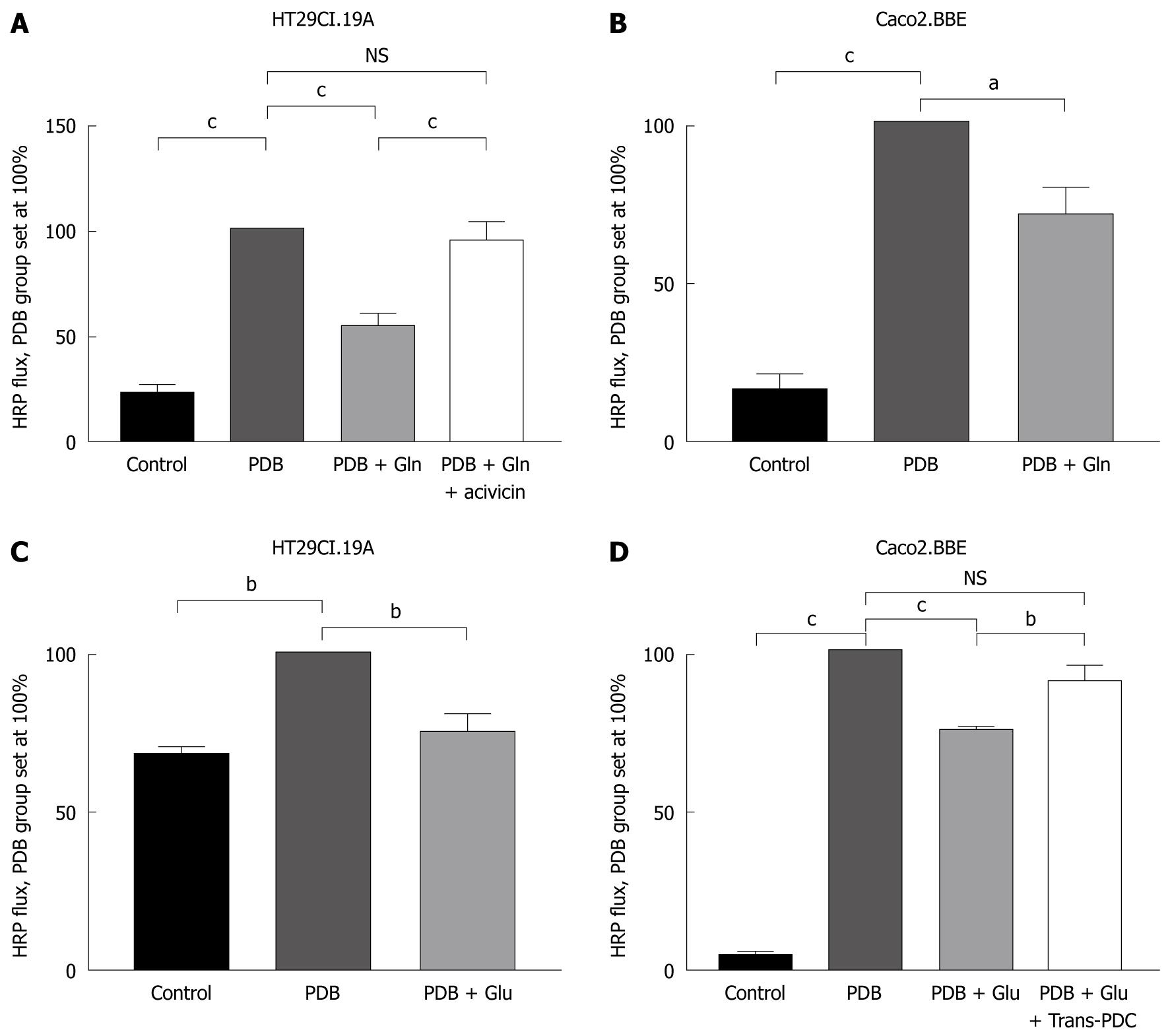Copyright
©2011 Baishideng Publishing Group Co.
World J Gastroenterol. Mar 28, 2011; 17(12): 1569-1573
Published online Mar 28, 2011. doi: 10.3748/wjg.v17.i12.1569
Published online Mar 28, 2011. doi: 10.3748/wjg.v17.i12.1569
Figure 1 Model illustrating intestinal cell lineage with tight junctions and EAAT transporter.
The extracellular enzymatic conversion of glutamine to glutamate by γ-glutamyltransferase (γ-GT) is shown on the apical side. The experimental design of the study using the γ-GT blocking enzyme, acivicin, and the blocker of the glutamate transporter, EAAT L-trans-pyrrolidine-2,4-dicarboxylic, is included in the figure.
Figure 2 Effects of glutamine and glutamate on phorbol-12,13-dibutyrate-induced permeability in the two intestinal cell lines.
A: In the HT29Cl.19A cell line, glutamine addition resulted in a 45% decrease in permeability. Acivicin nullified this effect, n = 6; B: In the Caco2.BBE cell line, glutamine addition resulted in a 30% decrease in permeability, n = 3; C: In the HT29Cl.19A cell line, glutamate addition resulted in a 25% decrease in permeability, n = 3; D: In the Caco2.BBE cell line, glutamate addition resulted in a 25% decrease in permeability. Trans-PDC nullified this effect, n = 4. aP < 0.05, bP < 0.01, cP < 0.01.
- Citation: Vermeulen MA, Jong J, Vaessen MJ, Leeuwen PAV, Houdijk AP. Glutamate reduces experimental intestinal hyperpermeability and facilitates glutamine support of gut integrity. World J Gastroenterol 2011; 17(12): 1569-1573
- URL: https://www.wjgnet.com/1007-9327/full/v17/i12/1569.htm
- DOI: https://dx.doi.org/10.3748/wjg.v17.i12.1569










